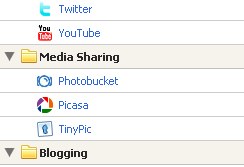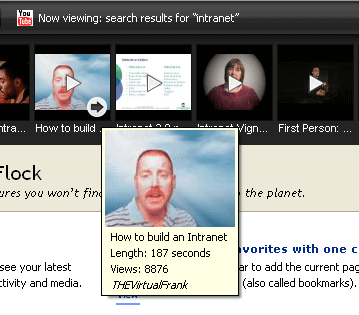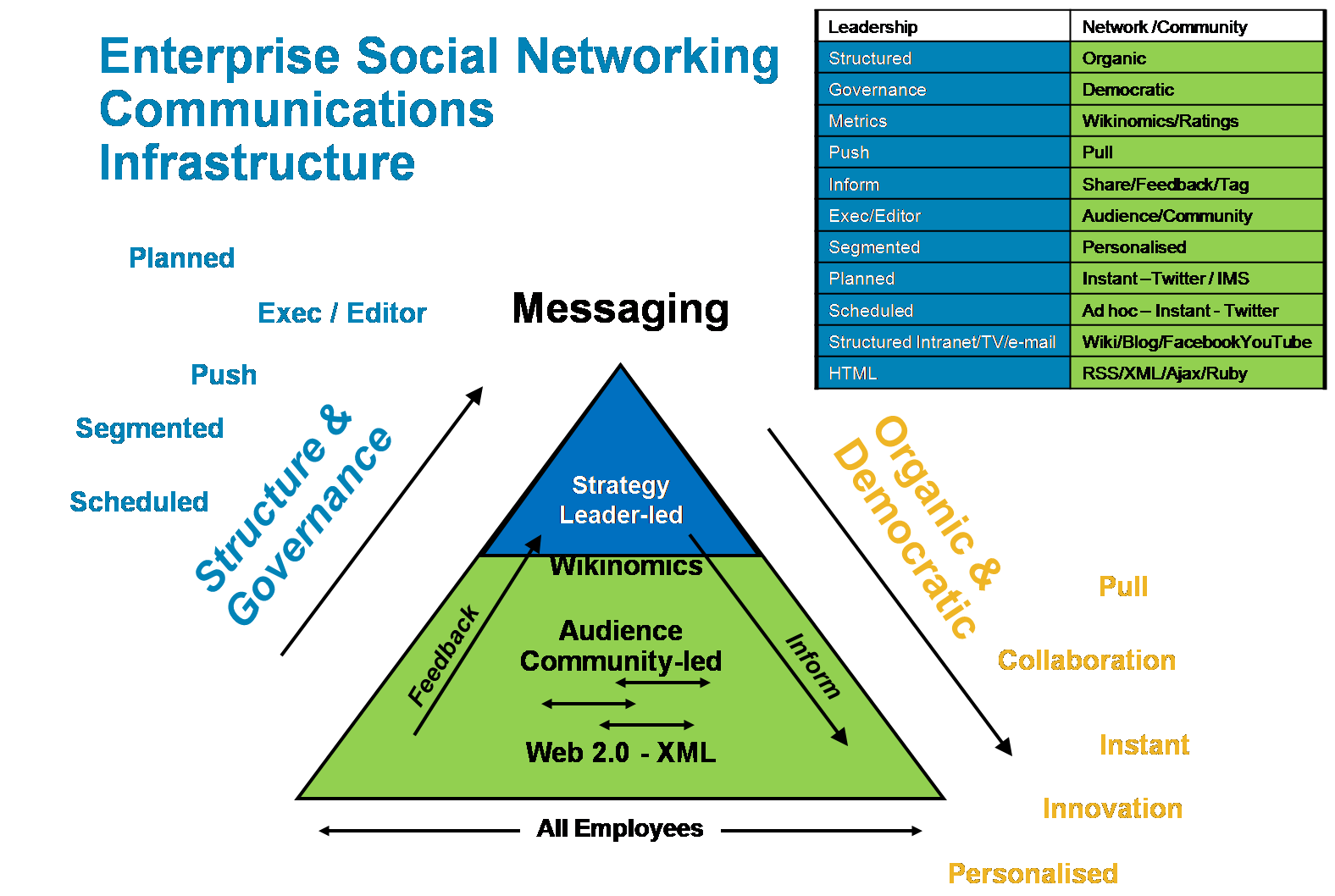This feed feature is now fixed. Just one niggle after Google took over Feedburner and removed the Feedburner ID.
Month: March 2009
news out from CeBIT that Microsoft has launched Surface in Europe: Microsoft Surface gets EMEA launch
As a result of a previous posting on Twitter I was sent the video below by @joshblake I’ve also been chatting with Paolo Tosolini –@Tosolini who has been doing some great work with Microsoft on video casting and using Microsoft Surface as a comms tool – (please see previous post).
Moving on from yesterday where I conjectured about the intranet browser of the future, the video below maybe shows why technology may just yet leap frog over any such solution. When I watch Microsoft Surface in action I keep thinking, what will this do for internal comms and the intranet of the future?
Funny really when you think about it, a lot of time, effort, blood, sweat and hard cash budget goes into the intranet itself, the CMS, the platform and portals, etc., etc., but little all goes into the browser. What of the Intranet Browser? A few searches on this shows not a lot being done, apart from one notable exception Shiv Singh at the AppGap Intranets are not just intranets anymore. Here Shiv rightly to my mind, talks about the core business functionality and says that:
Today, employees demand more consolidated interfaces where all the information, collaboration, self service and business application access needs are met.
This is certainly so, but for Shiv this is ‘post-browser’ issue and ultimately a question about ownership within the corporation and a need to realign to meet employee, not application or dept needs. Yes, indeed, this is an item I plan to write on shortly, but for the time being I think one needs to ask if this is really going to happen. I for one won’t be holding my breath here. There are possibilities – WebEx Connect for example, or Microsoft’s Surface Table technologies, but for the time being, let’s get tactical.
Getting Tactical
I think there’s a low hanger ready to be scrumped in terms of Shiv’s one stop consolidated interface, in terms of what we can do with the browser now. The model I believe is Flock. I’ve written before about the way that Flock so neatly integrates RSS into the browser experience and that if this was more widely adopted in the enterprise then tales of RSS’s death might certainly seem to be exaggerated (Kick my RSS – How to make Enterprise RSS work). But, and it’s a but as big as Galway Bay, why stop there? Why not use Mozilla technology to do what Flock has done for the average social media savvy punter and do the same for the enterprise?
Enterprise Social Network Browser
This is what I’d have in my Intranet Browser of the Future:
1) At the top left there would be a series of buttons to access the core built in functions. These button would provide access to function bars such as RSS

2) There would also be a direct hard wired button to Directory. The Directory would have full Tagging and self-personalisation functionality
3) This tagging would tie in to other social media tools, all accessible from the browser. One would be Favourites – my personal and social bookmarks that I could share with my colleagues
4) I would naturally also be able to connect a wide range of other enterprise social network tools, not only bookmarks, but also my internal corporate blog, my forums, my videos, etc etc. In the corporate example these would be Yammer or Jive, all or a mix. The key thing is the access to their functionality is hard-wired into the Browser, not the apps.

5) So continuing in the same logic, all the corporate video and streams would be available within the browser – these could be live IPTV shows, streamed Video on Demand (VoD), or user generated YouTube type video.

And so on and so on. To reiterate, the Browser holds all this together to create the ‘consolidated interface’. It’s a Pareto fix I grant, but 80% consolidation in the near future would be better than waiting indefinitely for the full delivery.
Apologies for the duff formatting – I need to look at how WordPress is handling images.
Using internal comms video to empower and inform a highly mobile and technically savvy workforce is one of the things I’ve spent a lot of career years on, so it was with keen eyes that I watched a Microsoft Surface video on how they’re doing it with cutting-edge surface table technology. The results look funky and efficient. I’d like to know more about how it all fits together. The questions that come to mind are:
How is the information is structured behind the creatives?
What the field sales guys reckon – nice or must have?
Tagging – I like tagging – what’s going on here? There looked like a means of synching up the info across multiple devices inc iPhones. This was the killler app I always wanted to provide our field sales guys with – don’t bombard but synch up so that the devices know when a message has gotton through. This looks like it delivers.
But delivery – is it push or pull, how do they find out about new content, how good is the engine behind it all?
It’s a good job that the presenter is on Twitter so I can now follow @tosolini and learn more…;-)
Over at Bertrand Dupperin’s Notepad blog there’s a great article on Enterprise Social Networks, Social networks are the quintessence of enterprise web 2.0. Bertrand looks at how the active users has to manage and interpret the information flows amd how social media tools join up as a final layer, a ‘protean set of tools’:
Social network for enterprises is not a Facebook-like that connect people. It’s a tool that gather in a one and only place all the logics of web 2.0 (blogs,wikis,bookmarking,tagging etc…) and take benefit of this information to re-create all the facets of the link between information and people as explained above.
Reading this got me rootling through old archives looking for a model I made some time back where I try and articulate this in terms of how messages are managed:
What I’m trying to get across here is the notion of effective leadership and direction from on high, coupled with an interaction and feedback from a socially networked and actively participating workforce. The more strategic the message, the more structure and governance, the more participatory, the more democratic, organic and ad hoc. I’ve also overlaid this with technologies / applications. Thus the more traditional messaging is structured by the orthodoxy of a managed intranet and scheduled messaging via e-mail or planned TV shows. The more socially generated messaging is powered by social tools such as blogs, Twitter apps and such. There’s also the idea of segmentation and pushed /targeting vs, personalisation and pull. Not sure if the whole sits together – it’s perhaps too much of a changing target to do that, but it’s a model that helps me understand and to play with the potentials and possibilities of enterprise social networks.
